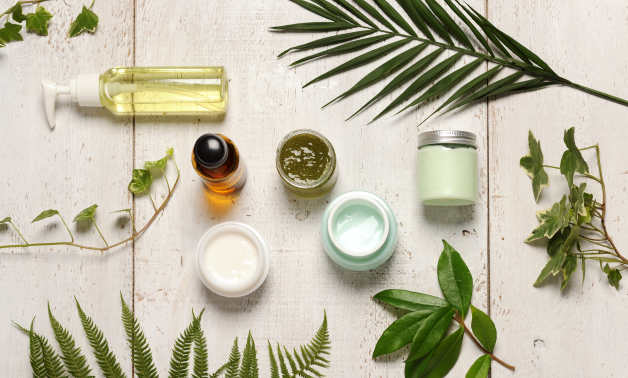(Lucknow): Healthy hair starts with a consistent and thoughtful hair care routine. Environmental factors like pollution, heat styling, and lack of proper maintenance often lead to thinning, dryness, and breakage. But with the right habits and a little care, you can enjoy strong, shiny, and beautiful hair. Here’s your ultimate guide to creating a healthy hair care routine, with tips on oiling, cleansing, conditioning, and protective styling, along with the added benefit of using hair extensions to avoid damage.
1. Hair Oiling And Scalp Massaging
Oiling is a time-tested way to nourish and strengthen hair. It deeply moisturises the scalp, strengthens hair roots, and helps prevent dryness and brittleness.
Types of oils and their benefits:
– Coconut Oil: Hydrates and strengthens hair.
– Argan Oil: Adds shine and reduces frizz.
– Castor Oil: Promotes hair growth and thickens strands.
– Olive Oil: Repairs damage and prevents split ends.
How often to oil:
– Normal to Dry Hair: 1-2 times a week.
– Oily Hair: Once a week.
How to oil your hair properly:
– Warm the oil slightly to enhance absorption.
– Gently massage your scalp in circular motions for 5-10 minutes.
– Leave it on for at least an hour or overnight.
– Wash off with a mild shampoo.
2. Cleansing the Scalp
Regular cleansing removes dirt, oil, and buildup from products, preventing clogged hair follicles. Exfoliation goes a step further by removing dead skin cells and stimulating blood circulation, helping products absorb better.
Exfoliation methods:
– Homemade scrubs: Sugar with coconut oil or coffee grounds with yogurt.
– Store-bought scrubs: Choose gentle exfoliators designed for scalp care.
– Natural exfoliants: Aloe Vera gel mixed with lemon juice.
Shampoo selection based on hair type:
– Oily Hair: Clarifying shampoos with ingredients like tea tree oil or charcoal.
– Dry Hair: Hydrating shampoos with shea butter or argan oil.
– Sensitive Scalp: Sulphate-free shampoos with calming ingredients like chamomile or aloe Vera.
– Colour Treated Hair: Use colour-safe shampoos to preserve vibrancy.
How to cleanse effectively:
– Wet your hair with lukewarm water.
– Apply shampoo and massage it into your scalp.
– Don’t apply shampoo directly to your hair lengths; let the lather cleanse them as you rinse.
– Use lukewarm or cool water to rinse, which helps seal the cuticles and reduce frizz.
– Follow up with conditioner, applying from mid-length to ends.
Ideal cleansing frequency:
– Oily Scalp: Exfoliate once a week and wash hair 3-4 times a week.
– Dry Scalp: Exfoliate every two weeks and wash hair 2-3 times a week.
– Normal Scalp: Exfoliate every 10 days and wash hair 2-3 times a week.
3. Conditioning and Hair Masks
Conditioning restores moisture to your hair, smooths the cuticle, and reduces frizz. Hair masks penetrate deep into the hair shaft, providing intense hydration.
How to use conditioner:

– After shampooing, squeeze excess water from your hair.
– Apply conditioner from mid-length to ends and leave for 2-3 minutes.
– Rinse thoroughly with cool water to lock in moisture.
How to use a hair mask:
– Apply once a week, focusing on your hair type (e.g., avocado for dry hair, yogurt for a protein boost).
– Leave on for 15-20 minutes before rinsing.
4. Avoid Heat Styling
Excessive heat styling can lead to dryness, split ends, and breakage. Using heat less styling techniques is a great way to maintain healthy hair while achieving the style you want. You can also use hair extensions for added volume and length without any damage.
Heat less styling ideas:
– Heat less rollers: Use soft foam rollers on damp hair before bed for bouncy curls.
– Braids: Braid damp hair before sleep to wake up with natural waves.
– Sock curls: Wrap hair around a sock or fabric tie for soft, natural curls overnight.
– Hair extensions: Add volume and length to your hair without using heat.
5. DIY Hair Treatment
Natural, homemade treatments can improve hair texture and strength. Consider using a DIY hair mask once a week for targeted results.
DIY hair masks:
– For dry hair: Mash one ripe banana, mix with 2 tablespoons of honey and 1 tablespoon of coconut oil. Apply for 30 minutes, then rinse.
– For oily hair: Mix 3 tablespoons of yogurt, 1 tablespoon of lemon juice, and 1 tablespoon of Aloe Vera. Apply for 20 minutes, then rinse.
– For hair growth: Blend onion juice with castor oil in a 2:1 ratio. Massage into the scalp for 30 minutes, then wash.
– For dandruff: Mix Neem leaves with yogurt to form a paste. Apply to the scalp, leave for 25 minutes, then rinse.
6. Regular Trimming- Regular trims prevent split ends, reduce breakage, and encourage even growth.
How often should you trim your hair?
– Fine, delicate, or chemically treated hair: Every 6-8 weeks.
– Medium to thick hair with minimal heat exposure: Every 8-12 weeks.
– For those growing their hair with minimal damage: Every 12-16 weeks.
Choosing the right haircut:
– Select styles that suit your face shape and hair type.
– Avoid excessive layering to prevent breakage.
– Consider blunt cuts or layers for added volume.
7. Gentle Hairstyles
Choosing gentle hairstyles prevents scalp tension and reduces breakage while protecting hair from pollution and sun damage.
Best low-tension hairstyles:
– Loose braids and buns: Keep hair in place without causing tension.
– Cornrows and twists: Help keep hair detangled and retain moisture.
– Silk or satin scarves: Protect hair from friction while you sleep.
– Loose ponytails: Use scrunchies instead of rubber bands to avoid damage.
In Conclusion:
Maintaining a healthy hair care routine is all about consistency. Regular oiling, cleansing, conditioning, and trimming, combined with heat less styling and hair extensions, can dramatically improve hair texture and strength. By following these steps, you can keep your hair healthy, shiny, and beautiful, without subjecting it to unnecessary damage.






